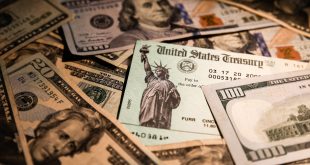Because of the US dollar’s strength and surging US Treasury bond yields, the price of gold has continued to perform worse. Because of higher rental prices, inflation increased steadily at a rate of 0.2% in July. In September, the Fed is anticipated to leave interest rates steady. The precious metal is trading at $1908.68 at the time of writing.
Policymakers are at ease because the US CPI in July was in line with the Fed’s mandated annual inflation rate of 2%. Rent increases are the primary cause of the rise in consumer inflation, which may allow the Fed to reduce interest rates and lessen concerns about a potential recession.
The US Retail Sales data for July, which will be released on Tuesday, will probably serve as an indicator for gold price movement this week. Given the strength of the US dollar, the price of gold appears to be falling towards the important support level of $1,900.
The US Dollar Index (DXY) rises to a five-week high around 103.00 as market sentiment remains cautious following the price increase in US shares. Higher US bond yields are still under pressure, with 10-year US Treasury yields circling at 4.16%. Despite a restrictive monetary policy and tough credit standards imposed by US commercial banks, both consumer and producer inflation in the US recovered in July.
However, consumer inflation grew at a slower-than-expected pace, with higher rentals offset by a decline in the cost of second-hand automobiles. Around 90% of the contribution to inflation was driven by higher shelter prices, suggesting that the Fed doesn’t need to raise interest rates further as prices of durables and non-durables are still declining.
Although US CPI and PPI have recovered, Fed officials are likely to consider holding interest rates steady because July’s monthly inflation pace is in line with the Fed’s target rate of 2%. Compared to forecasts and the previous projection of 3.0%, consumer inflation expectations for the next five years dropped to 2.9% in August.
Although the preliminary Michigan Consumer Sentiment index fell from 71.6 in July to 71.2, it still exceeded the prediction of 71.0. Investors next turn their attention to the US Retail Sales data for July, which is predicted to increase by 0.4% in that month after the Fed’s inflation data. The price of gold is steadily falling and is likely to touch the round $1,900.00 support level.
More weakening is predicted by the RSI’s lack of divergence and oversold signals, and the gold price develops a string of Inverted Hammer candlesticks. A new sell-off could start if the $1,910.00 support is broken.
 Noor Trends News, Technical Analysis, Educational Tools and Recommendations
Noor Trends News, Technical Analysis, Educational Tools and Recommendations





